Diabetic patients need to be more active to control their blood glucose, decrease insulin resistance, and reduce the need for diabetes medications.
Some of the best physical exercises for diabetics and prediabetics are mentioned here. These exercises not only keep the body in shape but also decrease insulin resistance which is one of the major problems in diabetes patients.
Since type 2 diabetes primarily occurs in later life, it is the most common diabetes in elderly people. More than 90% of the elderly population have diabetes mellitus type 2.
It is hence not a coincidence that these patients have a variety of co-morbid conditions in addition to diabetes. These include hypertension, high cholesterol, obesity, kidney, and heart disease.
Type 2 diabetes is commonly linked with a lack of physical activity, lack of physical fitness, and excessive body weight. Therefore, the benefits of exercise for the prevention and treatment of Diabetes and insulin resistance can not be overemphasized.
Bartol has nicely quoted the benefit of exercise in diabetics,
“Exercise is the best insulin sensitizer in the market, better than any medication we currently have available”
Key Points to remember when initiating an exercise program for the first time:
Exercise is a key factor to help deal with insulin resistance and obesity that is usually present in diabetic patients.
Each exercise session should include 5 minutes of warm-up and cool-down periods. Always start slowly and gradually increase the intensity of exercise.
Drink plenty of fluids and frequently monitor blood glucose to avoid hypoglycemia. If your blood glucose is less than 90 mg/dl, you should take some carbohydrates before starting exercise. A fruit or equivalent amount of carbohydrates may be sufficient.
The primary concern is hypoglycemia. It is especially a problem in patients who are on insulin, insulin secretagogues, the elderly, and those with comorbid conditions like heart and kidney diseases.
So, it’s necessary for patients to closely monitor blood glucose concentration before, during and after exercise.
Can you exercise if your blood glucose is too high?
It is better to avoid exercise, especially high-intensity exercise if your blood glucose is too high. Exercise may result in dehydration that can lead to HHS (Hyperosmolar Hyperglycemic State), kidney failure, Stroke, and Myocardial infarction.
It is better to avoid performing strenuous activities if:
- If fasting blood glucose level is greater than 250mg/dl
- If the random blood glucose level is greater than 300mg/dl
Benefits of Exercise for Diabetics:
Regular exercise in diabetic patients can decrease insulin resistance and reduce the risk of life-threatening problems including heart diseases, diabetic foot, etc.
Regular exercise in diabetic patients not only increases insulin sensitivity but also maintains blood sugar levels in the normal range. During exercise, blood glucose enters the muscle cells and fat cells even in the absence of insulin. There is an insulin-independent entry of glucose into the cells during exercise.
Exercise reduces the risk of cardiovascular problems and keeps the blood pressure in the normal range. Exercise prevents or at least slows down the development of complications secondary to diabetes.
Exercises For Diabetics and Pre-Diabetic Patients:
Diabetic patients can perform the following exercises depending on their level of activity, weight, and the body part that needs to be exercised.
- Strengthening Exercises.
- Aerobic Exercises.
- Flexibility Exercises.
- Endurance Exercises.
Strengthening Exercises.
Neck Stretching exercises:

- Stand straight with your hands on the sides of the body,
- Keep you right arm bent behind your back,
- Place the left hand on top of your head at the level of right ear,
- Gradually bring your head towards left shoulder, apply gentle force with your left hand already placed on head at the end range.
- Hold this position for at least 5 secs, relax, repeat again.
- Do this procedure same for the opposite side.
- Perform 5 repetitions on each side.
Shoulder Stretching Exercises for Diabetics:

- Stand straight with arms on each side of the body.
- Place the right hand on the left shoulder in such a way that with your left hand, grab your elbow joint and bring it to the left shoulder by gently applying pressure at the end range.
- Repeat this technique same on the other side as well.
- Apply this stretch for a minimum of 10 seconds, relax and repeat again.
- Perform 5 repetitions on each side.
Forearm Stretching Exercises for Diabetics:

- Using the palm of your left hand, pull the fingers of your supinated right hand to the range that you begin to feel the stretch in your right palm and forearm.
- Hold this stretch for 10secs and repeat again.
- Repeat this technique same on the other side as well.
- Perform 5 repetitions on each side.
Side Stretching Exercises:

- Stand straight, bend the right arm over your head in such a way that the right hand is at the level of the left ear.
- With the left hand, grab the bent elbow, and bring the right elbow towards the left side while bending your body too.
- Apply a gentle force at the end range to feel stretched.
- Repeat this technique same on the other side as well.
- Perform 5 repetitions on each side.
Standing Quadriceps Stretching Exercises:
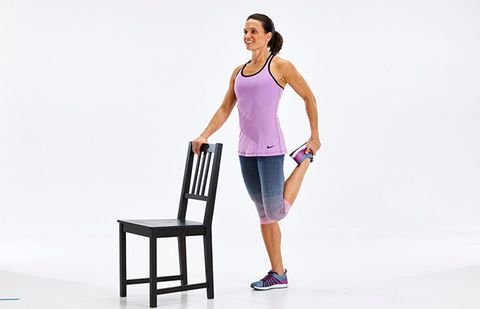
- Stand straight with arms placed on side of the body.
- Keep the backside of the chair in front of you in such a way that you can hold the back of a chair for support.
- Hold the back support of the chair with the left hand and bend the right knee to the maximum, holding the right foot with your right hand, while touching the foot to the hips.
- Apply gentle pressure at the end range to feel stretched.
- Repeat this technique same on the other side as well.
- Perform 5 repetitions on each side.
Hamstring Stretch:

- Stand straight.
- Place the footstep in front of you.
- Place the heel of the right foot on the second step of a footstep.
- Bend slightly forward to touch the toes of the right foot.
- You will feel a gentle stretch on the back region of your thigh.
- Perform the same for the opposite leg.
- Perform 5 repetitions on each side.
Progressive Resistance Exercises:
Shoulder Rotations:
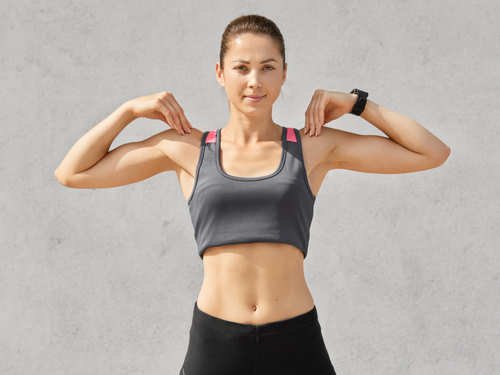
- Place both hands on both shoulders.
- Gently rotate the shoulders forward and backward.
Elbow Pumps:

- Bend your shoulders at 90 degrees in front of you with forearm pronated and fingers of both hands fully flexed making a fist.
- Bend your both elbows repeatedly in and out with forearm supination and pronation.
- Perform this exercise initially with 5 reps then gradually increase the repetitions every week.
- Perform this exercise initially without weight then add weights gradually and progress up to 30 repetitions maximum.
- For adding weight, use a half-liter water bottle in both hands and perform the exercise the same as described.
Wrist Pumping:

- Stand straight.
- Clench your both fists gently and move your wrists up and down frequently initially with 10 repetitions without weight.
- Then, hold half-liter of a bottle in each hand and repeat the same exercise.
- Gradually increase repetitions each week.
Standing Hip Flexion Exercises for Diabetics:

- Stand straight while keeping your back erect.
- Lift your knees towards your belly alternatively.
- Initially start this exercise with 10 repetitions during the first week, gradually add 5-10 repetitions each week and progress up to 30 repetitions.
Half Squat:

- Stand straight while holding the back of the chair placed in front of you.
- Keep your feet slightly wide.
- Keep your back straight in a neutral position.
- While holding the back of the chair with both hands, perform sit-stand, slowly bending your both knees to 90 degrees, and return to the starting position.
- Initially start this exercise with 10 repetitions during the first week, gradually add 5-10 repetitions each week and progress up to 30 repetitions.
Standing Calf Raise:
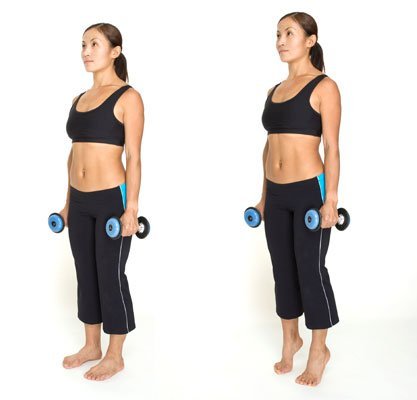
- Stand straight and place the backside of the chair in front of your body.
- Keep your back in a neutral position.
- While maintaining the balance of your body, holding the back of a chair, slowly raise your body on your toes and lowering the ankle down the floor gradually.
- Initially start this exercise with 10 repetitions during the first week, gradually add 5-10 repetitions each week and progress up to 30 repetitions.
Core Stabilization Exercises For Diabetics:
Single-Leg And Head Lift:
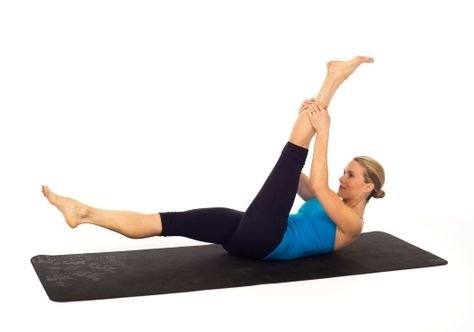
- Lie down on your back on a hard surface, gradually lift your right leg to 40-50 degrees, while slightly lifting your head and upper body including shoulders.
- Hold this position for 5-10secs.
- Gently place the limb and raised trunk back on the ground.
- Perform the same steps on the opposite limb as well.
Both Legs and Head Raise:

- Lie down on your back.
- Lift both legs together to 40-45 degrees.
- Lift upper back region and head simultaneously with legs.
- Both arms should be placed on the chest.
- Hold this position for 5-10 secs.
- Return to the starting position and do it again.
Reverse Curls:

- Lie on your back straight.
- Bend your both knees to 90 degrees with both feet flat on the ground.
- Bring the bent knees towards your chest simultaneously and then return to the starting position.
- Initially start the exercise with 10 repetitions and gradually increase the repetitions.
Sideways Arm Lifting:
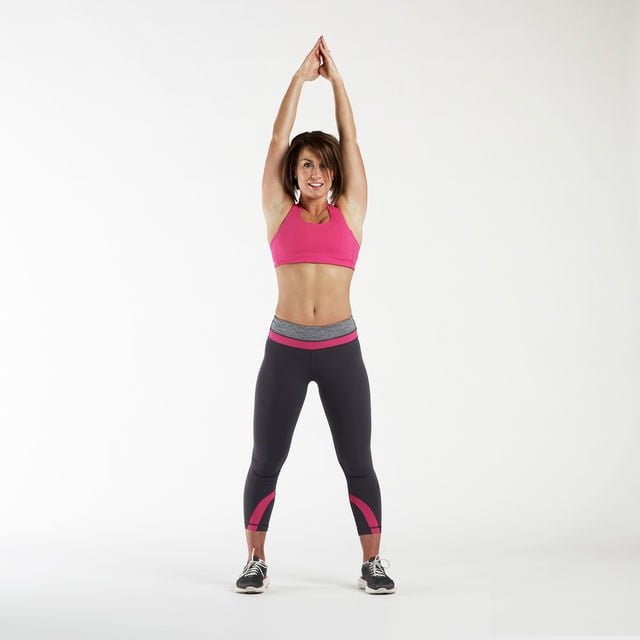
- Stand in a neutral position with your arms hanging on the side of your body.
- Raise your both arms from each side over your head.
- As you progress, add weight to each hand and repeat the exercise
- Perform half repetitions without weight and half with weight.
- Gradually progress up to 30 repetitions.
Circumduction:

- Stand straight with arms on side of the body.
- Move both arms in vertical circles, both in clockwise and anti-clockwise directions.
- As you proceed you can add weights in both hands and then perform the same exercise.
- Perform half repetitions without weight and half with weight.
- Gradually progress up to 30 repetitions.
Aerobic Exercises for Diabetics:
- Aerobic exercises are highly recommended for diabetic patients. At least 25-30 minutes of aerobic exercises twice or thrice a week initially can reduce insulin resistance and improve quality of life.
- These exercises are accompanied by higher Oxygen consumption, the workload on the heart increases, so it begins to pump at a higher rate, hence these aerobic activities are essential to improve the health of the heart and lungs.
Examples of Aerobic Exercises:
- Brisk walking,
- Cycling,
- Swimming,
If there is not any previous history of cardiovascular disease then the patient can perform aerobics for at least one hour with moderate to high intensity to increase the cell consumption of glucose and to prevent regain or to increase weight loss.
- All of the above-mentioned exercises are extremely important for diabetic patients
- Pre-exercise assessment is very important, especially if the patient presents with any diabetic complications, i.e. diabetic neuropathy or any musculoskeletal impairments.



